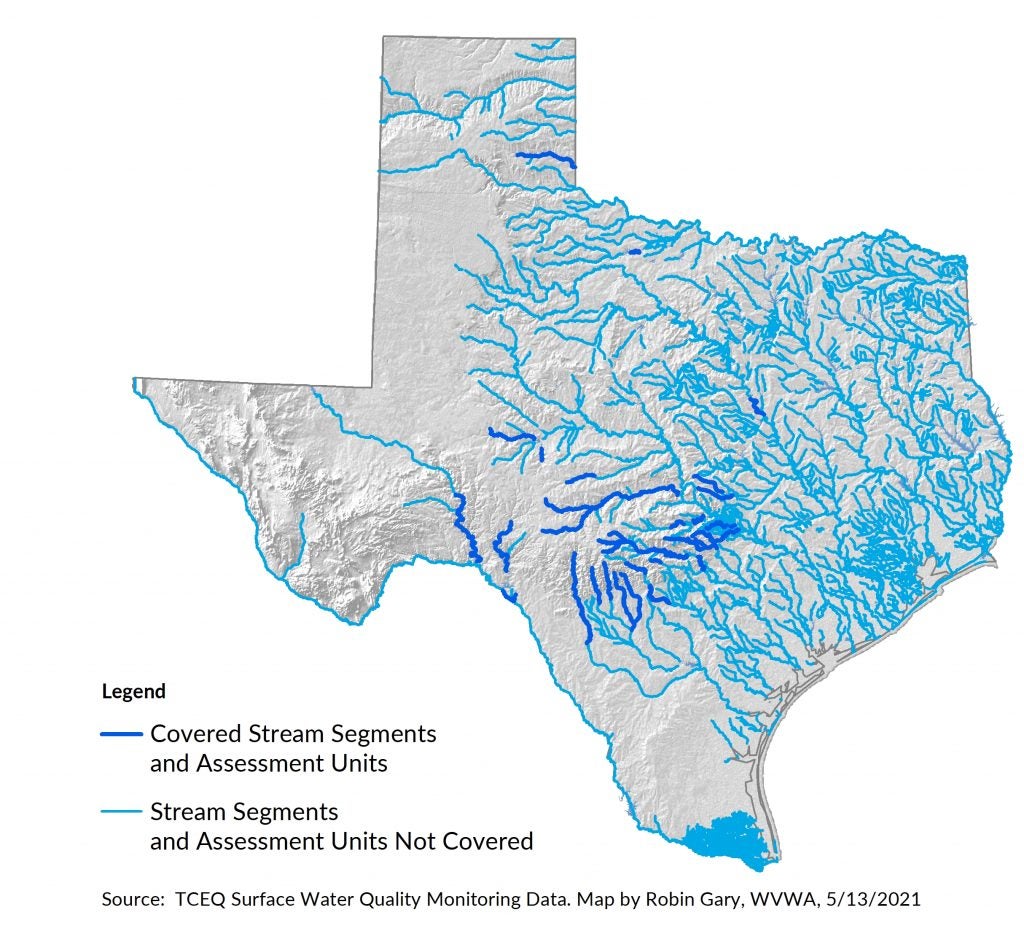The first time I paddled the Nueces River I was blown away by the water — crystal clear, aqua colored, almost tropical. I could easily see the bottom of the river many feet below me and fish as they darted under my kayak.
Fed by springs that percolate up from groundwater beneath the Edwards Plateau, the Nueces is among the last remaining uniquely pure waterways in Texas.
More development is leading to an increase in discharge permit applications in Texas, putting pristine waterways like the Nueces at risk.
House Bill 4146 by Rep. Tracy King (D-Laredo) and Senate Bill 1747 by Sen. Judith Zaffirini (D-Laredo) in the state Legislature will protect these unspoiled streams and rivers by prohibiting wastewater discharges in them. HB 4146 has passed the House and now awaits a hearing in the Senate Water, Agriculture and Rural Affairs Committee.
Although the house bill has received widespread support, it will be unlikely to pass this session if it isn’t heard by the Senate committee by Friday.

The Nueces River in Texas is a pristine river that would be protected by legislation pending in the state Senate. Source: Ben Newman
Why so few rivers are pristine
The Texas Commission on Environmental Quality permits municipalities and other entities to discharge treated wastewater effluent into rivers. For example, after I flush my toilet in Austin, the city of Austin treats this wastewater to meet state water quality standards and then discharges it into the Colorado River east of town.
This happens all the time, all over the state — to the point that treated municipal wastewater effluent has become an important source of flow for many Texas rivers. State water quality standards ensure that the treated wastewater discharged into rivers is relatively clean, but not pristine.
As the saying goes, dilution is the solution to pollution.
But not for the upper segments of the shallow streams and rivers fed by groundwater across the Edwards Plateau.
Why groundwater-fed springs are clearer and cleaner
Treated wastewater does not sustain these waterways. Groundwater-dependent springs do. This is why the water is so clear and so pure. It is why these streams make such glorious swimming holes that grace postcards.
Treated wastewater contains high amounts of phosphorus, which clouds water and causes algae blooms. The upper segments of streams and rivers fed solely by groundwater — like the Nueces, the Frio and the Devils — contain little to no phosphorus.
To make matters worse, if we discharge treated wastewater in these streams, we run the risk of polluting groundwater, too, because across the Edwards Plateau, groundwater and surface water are connected.
Texas Pristine Waters Covered by HB 4146
HB 4146 will help keep streams clean
If we allow treated wastewater effluent to be discharged into pristine waterways, they will forever be destroyed. So will the property rights of landowners who live along these waterways. HB 4146 is essential to protecting these waterways.
Importantly, the legislation will not stop development in the areas where these streams are located. Entities can treat and reuse wastewater effluent for irrigation or even for toilet flushing, not only protecting the water quality of pristine rivers but conserving the groundwater that feeds them, too.
More development in Texas is leading to an increase in discharge permit applications, putting pristine rivers and streams at risk. It’s time for Texas leaders to protect these state treasures. Share on XAs one supporter of HB 4146 wrote in comments to the House Environmental Regulation Committee, “We are all united — Democrats, Republicans, tree huggers, hunters, landowners with live water, landowners without live water, residents, visitors — no one wants these pristine creeks polluted.”
Given this widespread bipartisan support, the Senate Water, Agriculture and Rural Affairs Committee should hold a hearing and enable a vote on this legislation this week. We can’t afford to wait any longer to protect these state treasures.










